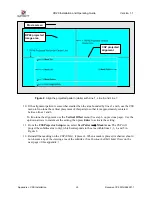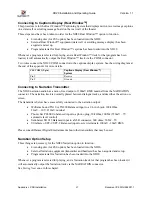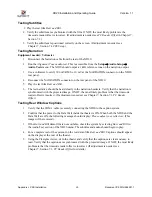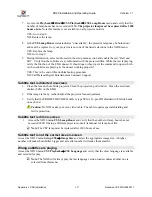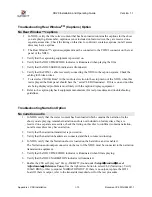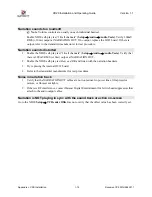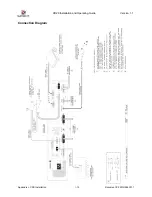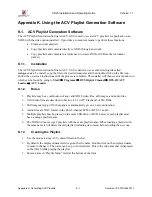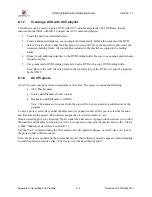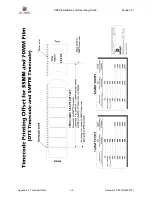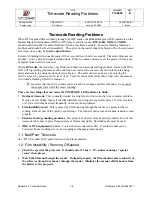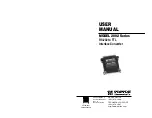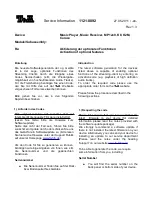
XD20 Installation and Operating Guide
Version 1.1
Appendix K. Generating ACV Playlists
Document #: 9301H264001.1
K-3
K.1.7.
Creating a DVD with ACV playlist.
The software can be used to create a DVD with ACV contents and playlist. The DVD may then be
inserted into the XD20 with DR-1 to ingest the ACV content and playlist.
1.
Create the playlist as described above.
2.
Create a designated folder on your computer for temporarily holding the contents of the DVD.
3.
Select “Create a Disk” under the Files menu (or select Ctrl-D). In the browse window select the
temporary holding folder. All content files included in the playlist are copied to the holding
folder.
4.
Repeat to add additional playlists to the DVD holding folder. Be sure to use unique playlist name
for each playlist.
5.
Use your favorite DVD burning program to burn a DVD with a copy DVD holding folder.
Note: Be sure the ACV files are placed in the root directory of the DVD or it cannot be ingested
by the XD20.
K.1.8. ACV
Projects.
An ACV project may be saved and reopened at a later time. The project contains the following:
•
ACV Playlist name
•
Source path/filenames for all content
•
Destination path/filename (or XD20)
Note: Clip names are not stored with the project file, but are stored in a subdirectory of the
program.
To save a project, select Save under the Files menu. A popup window allows you to select the location
and filename for the project. The software assigns the project the extension: “acv”.
Open an existing project by selecting “Open” under the Files menu. A popup window allows you to find
the location and filename for the project. After it is opened you may edit the playlist and use the “Create
A Disk” function, as described in section K.1.7.
Use the “Save” command under the Files menu to save the playlist changes, or select “Save As” to save
the project under a different name.
Note: If a project is opened and the content has moved, then following message appears when attempting
to send the playlist or create a disk: “The file is not at the described location”.


